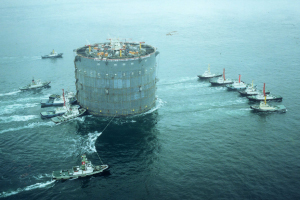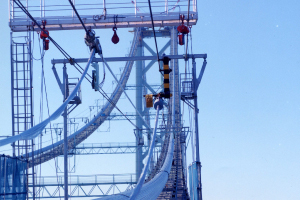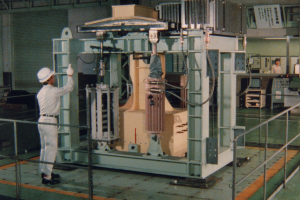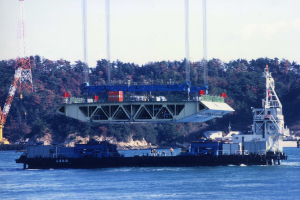Scour protection
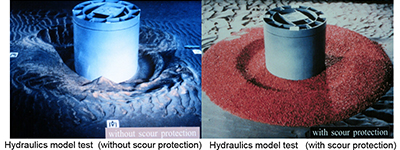
Development of scoue protection countermeasures to protect huge substructures under strong tide from overturning
At the Akashi-Kaikyo Bridge, the seafloor around the substructure is scoured by strong current, and will be overturned if nothing is done to prevent it.
We confirmed the scouring conditions over many years by means of numerous hydraulic experiments conducted both in the laboratory and on-site, and countermeasures were developed taking into account reliability and the workability in a short time.
Foundation format
Development of safe and reliable substructure construction method in deep water with strong tides
The key to constructing the Honshu-Shikoku Bridges was to overcome the deep water and strong tides of their environment.
Therefore, through various field experiments, and development of and experiments of construction machinery over many years, we have developed the laying-down caisson method and multi-column foundation construction methods, which have different concepts from the previous concept based on land construction.
In order to realize these substructure construction methods, we further developed underwater blasting method, seafloor excavation method in strong tides using clamshell dredger ships.
